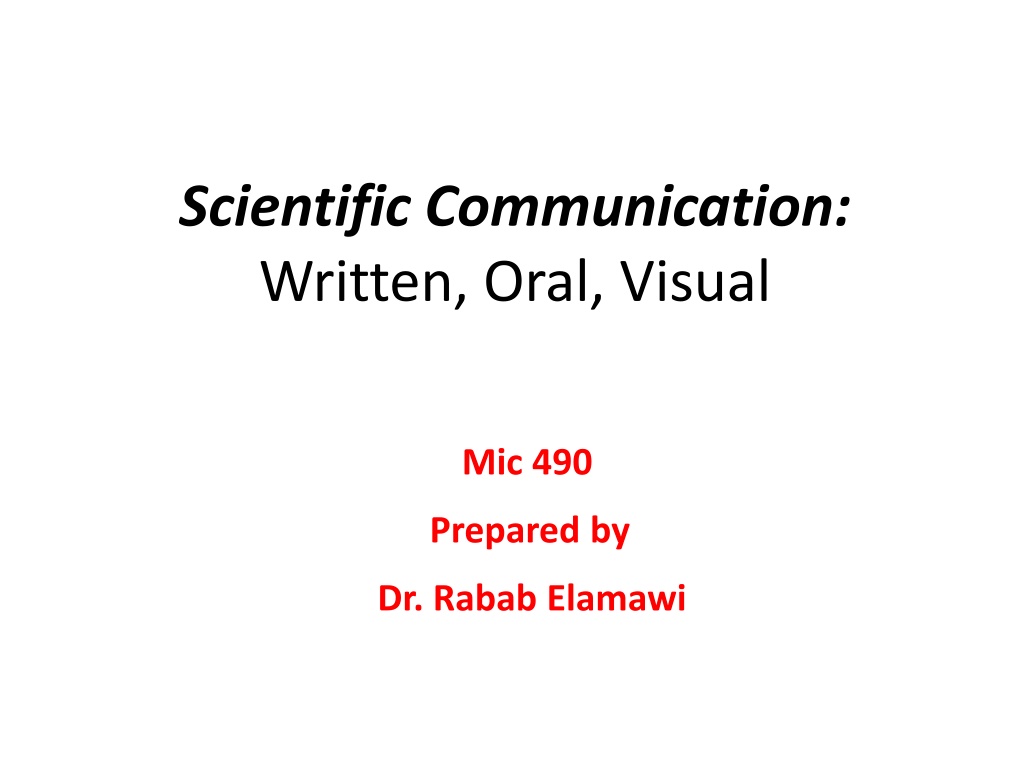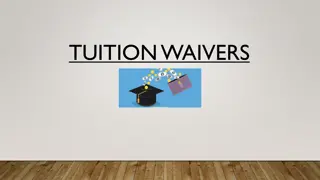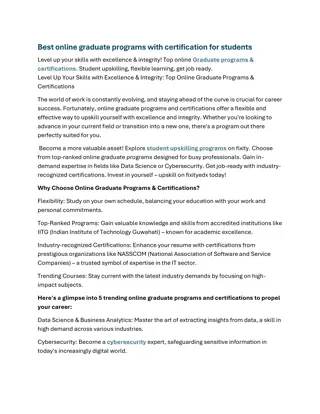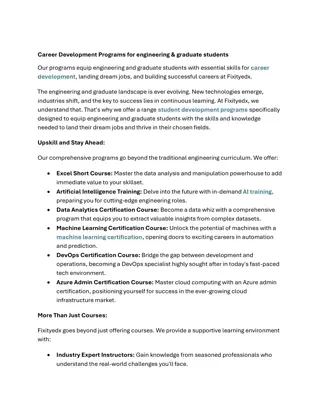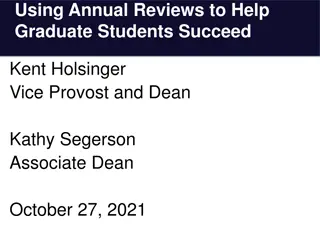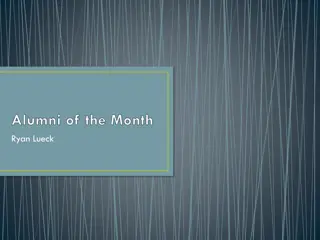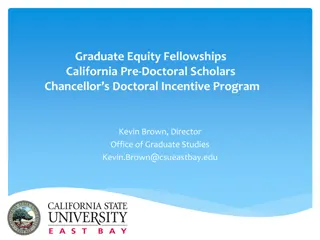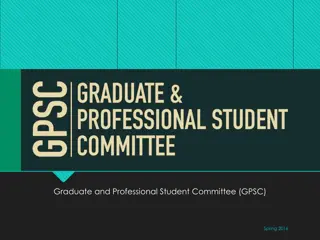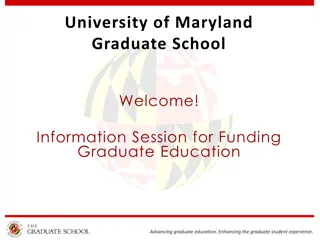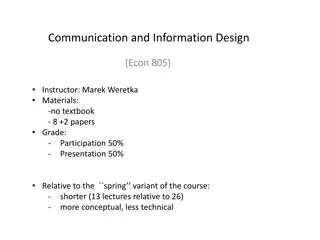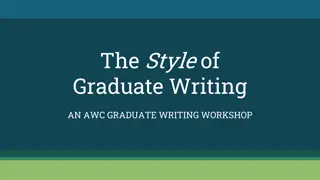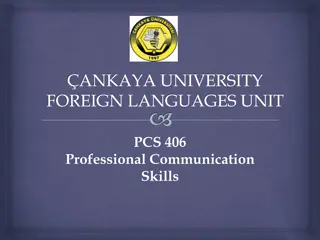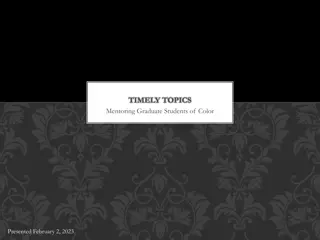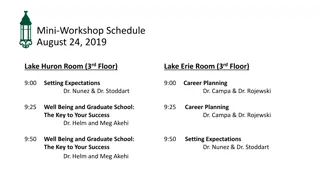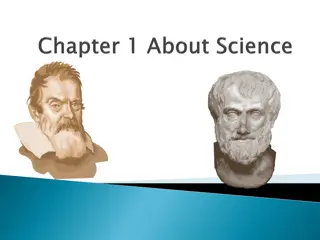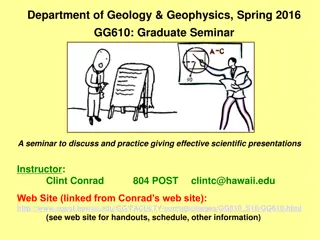Scientific Communication Techniques: Graduate Course Overview
Graduate-level course on scientific communication covering written, oral, and visual presentations. Emphasis on oral delivery, proposal development, and audience perspective. Includes lectures, student presentations, and constructive critiques over a 5-6 week period.
Download Presentation

Please find below an Image/Link to download the presentation.
The content on the website is provided AS IS for your information and personal use only. It may not be sold, licensed, or shared on other websites without obtaining consent from the author. Download presentation by click this link. If you encounter any issues during the download, it is possible that the publisher has removed the file from their server.
E N D
Presentation Transcript
Scientific Communication: Written, Oral, Visual Mic 490 Prepared by Dr. Rabab Elamawi
Course description: Graduate level overview of techniques for platform, poster and written - scientific presentations. Emphasis will be on oral presentation delivery, proposal development, content organization and audience perspective. - The course consists of lectures, student presentations and constructive critiques that takes place intensively over the 5-6 week course period.
SYLLABUS Organizing presentation elements; knowing the audience s needs; integrating data, showing relationships and causality Creating effective media elements; use of software products to enrich presentations Developing poster presentations; informal and spontaneous communications Developing, constructing, organizing and presenting an oral scientific presentation; leadership principles Constructive critique of student presentations ????????????????
TEXTS AND SPECIEAL TEACHING AIDS No special text will be required for the course. However, recommended texts will be suggested and additional materials will be duplicated for course participants.
Overview of presentation formats; oral presentation factors; organization of basic presentation elements; data integration, effective media elements. Assignment 1: Develop initial presentation topic
Poster design; outreach software; proposal writing. Assignment 2: Develop draft PowerPoint presentation poster
Presentation techniques; large venue experience; attend seminar Assignment 3: Attend external seminar. Write summary of content and provide presentation critique based on forms provided
Proposal presentations and critiques Assignment 5: Develop final scientific presentation and handout
Written Communication E-mail Report Journal Article Review Article Book Oral Communication Lecture Meeting Presentation Interview Visual Communication Poster Session Lecture Presentation
Written Communication Should : be clear be logical be factual use correct grammar use correct sentence structure avoid (rampant) speculation
Grammar There were 60 odd samples. vs There were 60-odd samples. "ie" is an abbreviation for the Latin "id est", which means "that is". "eg" is an abbreviation for the Latin "exempli gratia", which means "for example". "The deadline for this project is in two days - ie, on Friday." the deadline is on a specific day (Friday). "Please bring something to share to the seminar - eg, some of your famous nachos." "... for example, some of your world-famous nachos." If ie had been used here, it would have meant that you have been asked specifically to bring some nachos. Is that what was intended?
Some points of Style Do not use nouns as adjectives Not: ATP Formation; reaction product But: formation of ATP; product of the reaction G.M. Whitesides Adv. Mater. 2004, 16(15), 1375-1377. The word this must always be followed by a noun, so that its reference is explicit. Not: This is a fast reaction; This leads us to conclude But: This reaction is fast; This observation leads us to conclude Describe Experimental results uniformly in the past tense Not: Addition of water gives product. But: Addition of water gave product. Complete all comparisons Not: The yield was higher using iodine. But: The yield was higher using iodine than chlorine
PowerPoint Presentation Creation Slide Master Slides for the seminar need to be consistent both in text and color. An easy way to set up your slides so that they will all look the same is by using the Slide Master. Color The judicious use of color can make makes slides more interesting and can help illustrate a point (such as color-coding certain molecules or parts of molecules throughout the talk). However, there are some colors that are difficult to read. Yellow my not be the best choice on a white background. Importing objects For a chemistry seminar, it may be necessary to import objects into the presentation, namely images. Don t insert as link to an internet image (hotlink). It may change! Animation Animation, used sparingly, can add to a seminar. Use it to show certain structures or concepts, but use sparingly.
PowerPoint Presentation Guidelines 1.Speak to your audience before launching your visuals. 2.Keep eye contact primarily with your audience, not with your visual aids. 3.Avoid reading your slides or overheads to your audience. 4.Keep text to a minimum; let images and graphics illustrate and dramatize your points. 5.Use a font style that is simple and large enough (generally sans serif styles at least 18-24 points) to be read at a distance. No strange fonts 6.Minimize the number of points per slide. 7.Ensure consistency of syntax on each slide (e.g., if the first bullet point starts with a verb, all subsequent bullet points should start with a verb-it's easier to comprehend and more powerful). 8.Take time to introduce - and pause to allow the audience time to absorb - any - complex information (e.g., from a graph or chart). 9.Put your slide titles to work: help deliver the message, not merely give a name to the slide. 10.Blank the Screen to focus attention and re-claim the spotlight. (press b key to blank screen)
